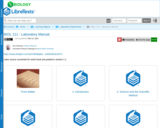
This is a General Biology lab manual.
- Subject:
- Biology
- Material Type:
- Activity/Lab
- Provider:
- LibreTexts
- Author:
- Alexey Shipunov
- Date Added:
- 02/22/2022

This is a General Biology lab manual.
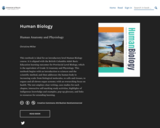
This textbook is ideal for an introductory level Human Biology course. It is aligned with the British Columbia Adult Basic Education learning outcomes for Provincial Level Biology, which is the equivalent of Grade 12 Anatomy and Physiology. This textbook begins with an introduction to sciences and the scientific method, and then addresses the human body in increasing scale: from biological molecules, to cells and tissues, to organs and all eleven organ systems; with an overarching focus on health. The text employs clear writing, case studies for each chapter, interactive self-marking study activities, highlights of Indigenous knowledge and examples, pop-up glossary, and links to resources for extending learning.

By the end of this section, you will be able to:Understand the synthesis of macromoleculesExplain dehydration (or condensation) and hydrolysis reactions
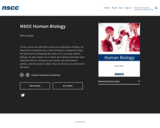
Short Description:
In this survey text, directed at those not majoring in biology, we dispel the assumption that a little learning is a dangerous thing. We hope that by skimming the surface of a very deep subject, biology, we may inspire you to drink more deeply and make more informed choices relating to your health, the environment, politics, and the greatest subject that are all of us are entwined in, life itself.
Long Description:
In this survey text, directed at those not majoring in biology, we dispel the assumption that a little learning is a dangerous thing. We hope that by skimming the surface of a very deep subject, biology, we may inspire you to drink more deeply and make more informed choices relating to your health, the environment, politics, and the greatest subject that are all of us are entwined in, life itself.
NSCC Human Biology by Rhea Langille is a condensed and adapted version of the open textbook Concepts of Biology—1st Canadian Edition by Charles Molnar and Jane Gair. Concepts of Biology—1st Canadian Edition is an adaptation of Concepts of Biology created by Rice University & OpenStax.
Word Count: 34095
ISBN: 978-1-990641-03-9
(Note: This resource's metadata has been created automatically by reformatting and/or combining the information that the author initially provided as part of a bulk import process.)

This college-level open textbook covers the most salient environmental issues from a biological perspective.
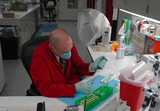
By the end of this section, you will be able to:Identify and describe the properties of lifeDescribe the levels of organization among living thingsRecognize and interpret a phylogenetic treeList examples of different sub disciplines in biology

Short Description:
In this survey text, directed at those not majoring in biology, we dispel the assumption that a little learning is a dangerous thing. We hope that by skimming the surface of a very deep subject, biology, we may inspire you to drink more deeply and make more informed choices relating to your health, the environment, politics, and the greatest subject that all of us are entwined in, life itself. This text also includes interactive H5P activities that you can use to evaluate your understanding as you go.
Long Description:
In this survey text, directed at those not majoring in biology, we dispel the assumption that a little learning is a dangerous thing. We hope that by skimming the surface of a very deep subject, biology, we may inspire you to drink more deeply and make more informed choices relating to your health, the environment, politics, and the greatest subject that all of us are entwined in, life itself. This text also includes interactive H5P activities that you can use to evaluate your understanding as you go.
In the adapted textbook, Concepts of Biology, you will find the following units: Unit 1: Principles of Cellular Life Unit 2: Principles of Inheritance Unit 3: Principles of Evolution Unit 4: Principles of Ecology
Word Count: 189359
(Note: This resource's metadata has been created automatically by reformatting and/or combining the information that the author initially provided as part of a bulk import process.)

By the end of this section, you will be able to:Identify and describe the properties of lifeDescribe the levels of organization among living thingsRecognize and interpret a phylogenetic treeList examples of different sub disciplines in biology

BIOL 1046 & 1047
Short Description:
In this survey text, directed at those not majoring in biology, we dispel the assumption that a little learning is a dangerous thing. We hope that by skimming the surface of a very deep subject, biology, we may inspire you to drink more deeply and make more informed choices relating to your health, the environment, politics, and the greatest subject that are all of us are entwined in, life itself. This text also includes interactive H5P activities that you can use to evaluate your understanding as you go.
Word Count: 230352
ISBN: 978-1-990641-15-2
(Note: This resource's metadata has been created automatically by reformatting and/or combining the information that the author initially provided as part of a bulk import process.)

By the end of this section, you will be able to:Understand the synthesis of macromoleculesExplain dehydration (or condensation) and hydrolysis reactions
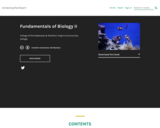
Long Description:
An introduction to biology intended for non-science majors. Focus areas include chemical foundations, cell structure and division, genetics, and evolution.
Word Count: 120840
(Note: This resource's metadata has been created automatically by reformatting and/or combining the information that the author initially provided as part of a bulk import process.)
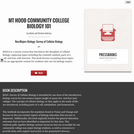
General Biology I: Survey of Cellular Biology
Short Description:
BI101A is a survey course that introduces the discipline of cellular biology, exploring topics including the scientific method, parts of a cell, and how cells function. This book focuses on putting those topics into an appropriate context for students who are not biology majors. Order a print copy: http://www.lulu.com/content/paperback-book/general-biology-i-survey-of-cellular-biology/23678471
Long Description:
BI101: Survey of Cellular Biology is intended for one term of the introductory biology course for non-science majors taught at many two- and four-year colleges. The concepts of cellular biology, as they apply to the study of life, are introduced, including parts of a cell, metabolism, and homeostasis.
This textbook incorporates the mandates found in Vision and Change and focuses on the non-content aspects of biology education that are just as important. Additionally, this book explicitly teaches the general education outcomes that we have identified as important for this class. This textbook pulls together biology content resources that are accessible for our community college non-major biology students, as well as resources to provide them with explicit instruction in the quantitative literacy, communication, and information literacy general education outcomes as they relate to the biology content they are learning.
Contact the author for inquiries about quiz question banks.
Order a print copy: http://www.lulu.com/content/paperback-book/general-biology-i-survey-of-cellular-biology/23678471
Word Count: 39220
ISBN: 978-1-63635-043-1
(Note: This resource's metadata has been created automatically by reformatting and/or combining the information that the author initially provided as part of a bulk import process.)

Word Count: 214630
(Note: This resource's metadata has been created automatically by reformatting and/or combining the information that the author initially provided as part of a bulk import process.)
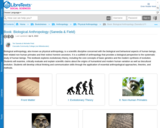
Biological anthropology, also known as physical anthropology, is a scientific discipline concerned with the biological and behavioral aspects of human beings, their related non-human primates and their extinct hominin ancestors. It is a subfield of anthropology that provides a biological perspective to the systematic study of human beings. This textbook explores evolutionary theory, including the core concepts of basic genetics and the modern synthesis of evolution. Students will examine, critically evaluate and explain scientific claims about the origins of humankind and modern human variation as well as biocultural evolution. Students will develop critical thinking and communication skills through the application of essential anthropological approaches, theories, and methods.
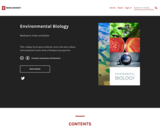
This college-level open textbook covers the most salient environmental issues from a biological perspective. Environmental Biology is a free open textbook that enables students to develop a nuanced understanding of today’s most pressing environmental issues. This text helps students grasp the scientific foundation of environmental topics so they can better understand the world around them and their impact upon it. This book is a collaboration between various authors and organizations that are committed to providing students with high quality and affordable textbooks.
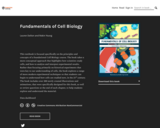
This textbook is focused specifically on the principles and concepts of a foundational Cell Biology course. The book takes a more conceptual approach that highlights how scientists study cells, and how to analyze and interpret experimental results. Rather than focusing primarily on historical experiments that were key to our understanding of cells, the book explores a range of more modern experimental techniques so that students can begin to understand how cells are studied now, in the 21st century. The book includes over 200 newly created illustrations and animations, that were specifically designed for this book, as well as review questions at the end of each chapter, to help students explore and understand the material.
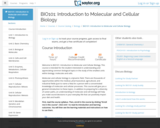
This course is designed for students who want to learn about and appreciate basic biological topics while studying the smallest units of biology: molecules and cells.
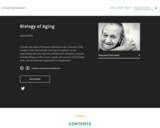
Short Description:
Includes the study of the gross and microscopic structure of the systems of the human body with special emphasis on the relationship between structure and function. Integrates anatomy and physiology of cells, tissues, organs, the systems of the human body, and mechanisms responsible for homeostasis.
Word Count: 134931
(Note: This resource's metadata has been created automatically by reformatting and/or combining the information that the author initially provided as part of a bulk import process.)

By the end of this section, you will be able to:Discuss the role of carbohydrates in cells and in the extracellular materials of animals and plantsExplain the classifications of carbohydratesList common monosaccharides, disaccharides, and polysaccharides
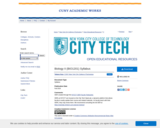
This is a syllabus for a first-semester introductory biology class, including reading links for current news articles related to the course topics as well as an OpenStax textbook.

An Exploration of Structure and Function
Word Count: 262780
(Note: This resource's metadata has been created automatically by reformatting and/or combining the information that the author initially provided as part of a bulk import process.)
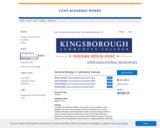
Currently, many academic institutions are using one or more variations of online modalities due to the Covid-19 pandemic, and science educators face a unique challenge with distance-learning laboratories. Many resources to engage students in virtual, interactive laboratory activities exist, but we found that high costs and/or overlooked content left gaps for several topics typically taught in a general, introductory biology course for undergraduate biology majors (e.g., organismal biology). Additionally, resources for an online lab must be identified and curated from multiple sources, requiring intense demands on the instructors’ time. To meet this need and to overcome the financial burden of high-cost lab manuals or software, we developed, piloted, and revised a series of online general biology lab exercises. We have published these exercises as an Open Educational Resource (OER) digital laboratory manual under the Creative Commons License Agreement, and they are accessible online via Manifold, Creative Commons, and the CUNY Academic Works portal.

The text introduces students to molecular cell biology within the context of a semester-long research project in functional genomics. In the Pathways over Time project, students study the evolutionary conservation of genes in methionine synthesis. Each chapter includes both theoretical background material as well as detailed experimental procedures. Chapters can be used alone or in combination, depending on the course.
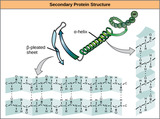
By the end of this section, you will be able to:Describe the functions proteins perform in the cell and in tissuesDiscuss the relationship between amino acids and proteinsExplain the four levels of protein organizationDescribe the ways in which protein shape and function are linked

An Open Education Resource
Short Description:
Mathematical modelling plays an increasingly important role in almost any area of life sciences, and this interactive textbook focuses on the areas of population ecology, infectious diseases, immunology and cell dynamics, gene networks and pharmacokinetics. It is aimed at anyone who is interested in learning about how to model biological systems, including undergraduate and postgraduate mathematics students who have not studied mathematical biology before, life-sciences students with an interest in modelling, and post-16 mathematics students interested in university-level material. Some mathematical knowledge is assumed, and the mathematical models used are all in the form of ordinary differential equations.
Word Count: 41598
(Note: This resource's metadata has been created automatically by reformatting and/or combining the information that the author initially provided as part of a bulk import process.)

By the end of this section, you will be able to:Discuss the role of carbohydrates in cells and in the extracellular materials of animals and plantsExplain the classifications of carbohydratesList common monosaccharides, disaccharides, and polysaccharides
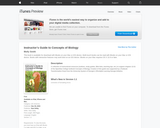
This Instructor’s Guide contains the brief outlines of Chapters 12-21 as found in Concepts of Biology, though some underwent revision. Also, instructors will find detailed outlines of the text for use in lecturing, as well as structured outlines that may be used by students to take notes while reading the chapter or during lecture. All outlines are derived from the OpenStax text. Additionally, study guides that contain a variety of questions are provided for students.
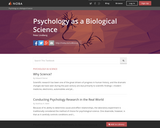
This textbook provides standard introduction to psychology course content with a specific emphasis on biological aspects of psychology. This includes more content related to neuroscience methods, the brain and the nervous system. This book can be modified: feel free to add or remove modules to better suit your specific needs.Please note that the publisher requires you to login to access and download the textbooks.
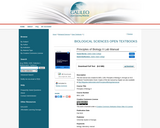
This lab manual was created for BIOL 1108, Principles of Biology II, through an ALG Textbook Transformation Grant.
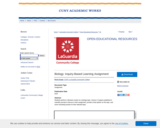
Students perform a literature review on a biology topic, choose 2-3 papers published in scientific journals to discuss in their assignment, provide a final opinion on the topic, and some voluntarily present on their selected topic.
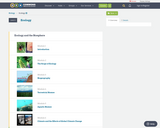

By the end of this section, you will be able to:Describe the four major types of lipidsExplain the role of fats in storing energyDifferentiate between saturated and unsaturated fatty acidsDescribe phospholipids and their role in cellsDefine the basic structure of a steroid and some functions of steroidsExplain the how cholesterol helps to maintain the fluid nature of the plasma membrane
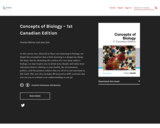
Short Description:
In this survey text, directed at those not majoring in biology, we dispel the assumption that a little learning is a dangerous thing. We hope that by skimming the surface of a very deep subject, biology, we may inspire you to drink more deeply and make more informed choices relating to your health, the environment, politics, and the greatest subject that are all of us are entwined in, life itself. This text also includes 80 interactive H5P activities that you can use to evaluate your understanding as you go.
Long Description:
In this survey text, directed at those not majoring in biology, we dispel the assumption that a little learning is a dangerous thing. We hope that by skimming the surface of a very deep subject, biology, we may inspire you to drink more deeply and make more informed choices relating to your health, the environment, politics, and the greatest subject that are all of us are entwined in, life itself. This text also includes 80 interactive H5P activities that you can use to evaluate your understanding as you go.
In the adapted textbook, Concepts of Biology — 1st Canadian Edition, you will find the following units: Unit 1: The Cellular Foundation of Life Unit 2: Cell Division and Genetics Unit 3: Molecular Biology and Biotechnology Unit 4: Animal Structure and Function
Word Count: 274896
ISBN: 978-1-989623-99-2
(Note: This resource's metadata has been created automatically by reformatting and/or combining the information that the author initially provided as part of a bulk import process.)
![Biological Psychology [Revised Edition]](https://img.oercommons.org/160x134/oercommons/media/upload/materials/images/Cover__RotelProject_FiSU-Biological-Psychology-RE.jpg)
Biological psychology is the study of the biological bases of behavior and mental processes. It explores how biological factors like genes, hormones, neurotransmitters, and brain structures influence psychological components like thoughts, emotions, memories, and actions. This free and open textbook provides a wide ranging and up-to-date introduction to the main topics and methods of biological psychology.
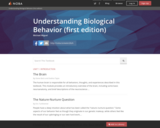
A collection of modules on the biological causes of psychological behavior.

Word Count: 10877
(Note: This resource's metadata has been created automatically by reformatting and/or combining the information that the author initially provided as part of a bulk import process.)
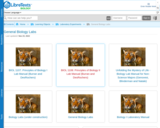
This is a link to a collection of the General Biology lab manuals available on LibreTexts.

By the end of this section, you will be able to:Describe the four major types of lipidsExplain the role of fats in storing energyDifferentiate between saturated and unsaturated fatty acidsDescribe phospholipids and their role in cellsDefine the basic structure of a steroid and some functions of steroidsExplain the how cholesterol helps to maintain the fluid nature of the plasma membrane

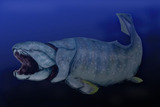
By the end of this section, you will be able to:Describe the difference between jawless and jawed fishesDiscuss the distinguishing features of sharks and rays compared to other modern fishes

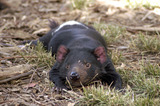
By the end of this section, you will be able to:Name and describe the distinguishing features of the three main groups of mammalsDescribe the proposed line of descent that produced mammalsList some derived features that may have arisen in response to mammals’ need for constant, high-level metabolism

Short Description:
In this survey text, directed at those not majoring in biology, we dispel the assumption that a little learning is a dangerous thing. We hope that by skimming the surface of a very deep subject, biology, we may inspire you to drink more deeply and make more informed choices relating to your health, the environment, politics, and the greatest subject that are all of us are entwined in, life itself. This text also includes 80 interactive H5P activities that you can use to evaluate your understanding as you go.
Long Description:
In this survey text, directed at those not majoring in biology, we dispel the assumption that a little learning is a dangerous thing. We hope that by skimming the surface of a very deep subject, biology, we may inspire you to drink more deeply and make more informed choices relating to your health, the environment, politics, and the greatest subject that are all of us are entwined in, life itself. This text also includes 80 interactive H5P activities that you can use to evaluate your understanding as you go.
In the adapted textbook, Concepts of Biology — 1st Canadian Edition, you will find the following units: Unit 1: The Cellular Foundation of Life Unit 2: Cell Division and Genetics Unit 3: Molecular Biology and Biotechnology Unit 4: Animal Structure and Function
Word Count: 274848
(Note: This resource's metadata has been created automatically by reformatting and/or combining the information that the author initially provided as part of a bulk import process.)
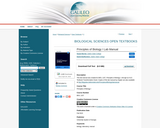
This lab manual was created for BIOL 1107, Principles of Biology I, through an ALG Textbook Transformation Grant.
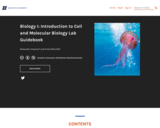
An online lab guidebook to prepare students for the labs in our Introductory Cell and Molecular Biology Course
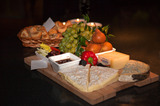

This course will introduce you to a general overview of the biological world. Important concepts will be reinforced and expanded upon through completion of weekly laboratory activities and homework assignments. Upon successful conclusion of the course, students will be able to do the following: Describe the nature of science, including its methods and its limitations; Describe the basic methodology of doing science and the scientific method; Use the scientific method to study everyday situations as well as in laboratory/field investigations; Identify, describe, and explain at a rudimentary level and present examples of, the characteristics common to all living things; Explain that living organisms are composed of molecules which interact in a variety of different chemical reactions necessary to sustain life; Explain that living organisms are comprised of one or more cells and are classified as prokaryotic or eukaryotic based on cellular characteristics; Describe the hereditary information possessed by living and explain how that information determines the cellular characteristics and functions (including basic Mendelian genetics); Explain and describe, with examples, the diversity of life, at different levels (basic molecular to ecological) and how it is hierarchically organized into systems; Explain how evolution by natural selection occurs, and describe the evidence that supports the theory of evolution; and more.
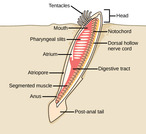
By the end of this section, you will be able to:Describe the distinguishing characteristics of chordatesIdentify the derived character of craniates that sets them apart from other chordatesDescribe the developmental fate of the notochord in vertebrates

By the end of this section, you will be able to:Describe the evolutionary history of birdsDescribe the derived characteristics in birds that facilitate flight
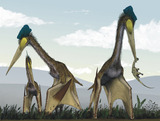
By the end of this section, you will be able to:Describe the main characteristics of amniotesExplain the difference between anapsids, synapsids, and diapsids, and give an example of eachIdentify the characteristics of reptilesDiscuss the evolution of reptiles

By the end of this section, you will be able to:Describe representative protist organisms from each of the six presently recognized supergroups of eukaryotesIdentify the evolutionary relationships of plants, animals, and fungi within the six presently recognized supergroups of eukaryotes
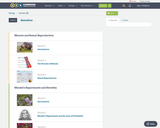
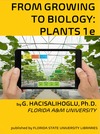
Ready to find out how plants are grown and function? Take a fantastic voyage through plants. From Growing to Biology: Plants 1e brings the latest information for understanding of traditional and modern plant growing, form, and production. Topics covered in 30 chapters include concise and up-to-date ‘big picture’ infographics, student learning outcomes (SLOs), key vocabulary, assessment, as well as identification of 120 species, and more. Moreover, author Dr. G. Hacisalihoglu emphasizes on leaning concepts, binding those concepts together with visuals approach to make learning faster and more memorable.
From Growing to Biology: Plants 1e is packed full of horticultural information that is ideal for both academia and industry growers. It is basic enough that if you are just getting started learning plants, you will be able to catch up. Always remember that practice makes permanent and keep going to take your learning plant bio to new levels.
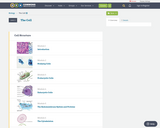

By the end of this section, you will be able to:Describe the structure of nucleic acids and define the two types of nucleic acidsExplain the structure and role of DNAExplain the structure and roles of RNA




By the end of this section, you will be able to:Describe the important difference between the life cycle of amphibians and the life cycles of other vertebratesDistinguish between the characteristics of Urodela, Anura, and ApodaDescribe the evolutionary history of amphibians
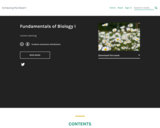
Word Count: 222624
(Note: This resource's metadata has been created automatically by reformatting and/or combining the information that the author initially provided as part of a bulk import process.)

Short Description:
This book aims to provide the basic foundational chemistry required to understand the structure and function of human cells, tissues, organs, and organ systems covered in Biology 1190 and 1191 at Langara College.
Word Count: 9018
(Note: This resource's metadata has been created automatically by reformatting and/or combining the information that the author initially provided as part of a bulk import process.)
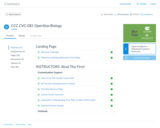
This sample shell is produced by the California Community Colleges CVC-OEI to support faculty in the use of Open Educational Resources and development of courses aligned to the OEI Course Design Rubric. The shell may be used for online, hybrid, &/or face-to-face classes. The shell is available for all faculty, not just those faculty in the CCC system. The team producing this shell includes Helen Graves, Liezl Madrona, Cyrus Helf, Nicole Woolley & Barbara Illowsky. If you are having challenges importing the shell, here are some steps to take. (1) Create an empty shell in your sandbox. (2) Import the Canvas Commons course into your shell. (3) Adapt the content as you wish. (4) If all else fails, contact your college IT person or Canvas administrator.

Chapter Sections:
-The Earth, Humans, and the Environment
-The Process of Science
-Environment and Sustainability
-Environmental Ethics
-Environmental Justice and Indigenous Struggles
-Chapter Attributions
Word Count: 80205
(Note: This resource's metadata has been created automatically as part of a bulk import process by reformatting and/or combining the information that the author initially provided. As a result, there may be errors in formatting.)

Word Count: 93961
(Note: This resource's metadata has been created automatically as part of a bulk import process by reformatting and/or combining the information that the author initially provided. As a result, there may be errors in formatting.)
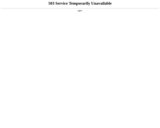
This is a textbook for a course on Human Biology.
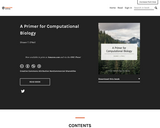
Short Description:
Now available in print at Amazon.com and via the OSU Press! Data Dashboard
Long Description:
A Primer for Computational Biology aims to provide life scientists and students the skills necessary for research in a data-rich world. The text covers accessing and using remote servers via the command-line, writing programs and pipelines for data analysis, and provides useful vocabulary for interdisciplinary work. The book is broken into three parts: Introduction to Unix/Linux: The command-line is the “natural environment” of scientific computing, and this part covers a wide range of topics, including logging in, working with files and directories, installing programs and writing scripts, and the powerful “pipe” operator for file and data manipulation. Programming in Python: Python is both a premier language for learning and a common choice in scientific software development. This part covers the basic concepts in programming (data types, if-statements and loops, functions) via examples of DNA-sequence analysis. This part also covers more complex subjects in software development such as objects and classes, modules, and APIs. Programming in R: The R language specializes in statistical data analysis, and is also quite useful for visualizing large datasets. This third part covers the basics of R as a programming language (data types, if-statements, functions, loops and when to use them) as well as techniques for large-scale, multi-test analyses. Other topics include S3 classes and data visualization with ggplot2.
Word Count: 111597
(Note: This resource's metadata has been created automatically by reformatting and/or combining the information that the author initially provided as part of a bulk import process.)

Word Count: 41181
(Note: This resource's metadata has been created automatically by reformatting and/or combining the information that the author initially provided as part of a bulk import process.)
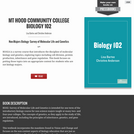
General Biology II: Survey of Molecular Life and Genetics
Short Description:
BI102A is a survey course that introduces the discipline of molecular biology and genetics, exploring topics including cell division, protein production, inheritance and gene regulation. This book focuses on putting those topics into an appropriate context for students who are not biology majors. Order a print copy: http://www.lulu.com/content/paperback-book/general-biology-ii-survey-of-molecular-life-and-genetics/23678587
Long Description:
BI102: Survey of Molecular Life and Genetics is intended for one term of the introductory biology course for non-science majors taught at many two- and four-year colleges. The concepts of genetics, as they apply to the study of life, are introduced, including the principles of inheritance, genetics, and gene regulation.
This textbook incorporates the mandates found in Vision and Change and focuses on the non-content aspects of biology education that are just as important. Additionally, this book explicitly teaches the general education outcomes that we have identified as important for this class. This textbook pulls together biology content resources that are accessible for our community college non-major biology students, as well as resources to provide them with explicit instruction in the quantitative literacy, communication, and information literacy general education outcomes as they relate to the biology content they are learning.
Contact the author for inquiries about quiz question banks.
Order a print copy: http://www.lulu.com/content/paperback-book/general-biology-ii-survey-of-molecular-life-and-genetics/23678587
Word Count: 51102
ISBN: 978-1-63635-044-8
(Note: This resource's metadata has been created automatically by reformatting and/or combining the information that the author initially provided as part of a bulk import process.)
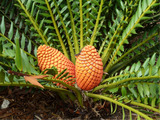
By the end of this section, you will be able to:Discuss the type of seeds produced by gymnosperms, as well as other characteristics of gymnospermsState which period saw the first appearance of gymnosperms and explain when they were the dominant plant lifeList the four groups of modern-day gymnosperms and provide examples of each
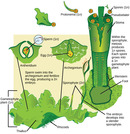
By the end of this section, you will be able to:Identify the main characteristics of bryophytesDescribe the distinguishing traits of liverworts, hornworts, and mossesChart the development of land adaptations in the bryophytesDescribe the events in the bryophyte lifecycle
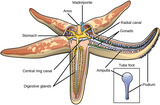
By the end of this section, you will be able to:Describe the distinguishing characteristics of echinodermsDescribe the distinguishing characteristics of chordates

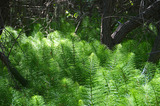
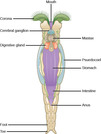
By the end of this section, you will be able to:Describe the unique anatomical and morphological features of flatworms, rotifers, Nemertea, mollusks, and annelidsDescribe the development of an extracoelomic cavityDiscuss the advantages of true body segmentationExplain the key features of Platyhelminthes and their importance as parasitesDescribe the features of animals classified in phylum Annelida
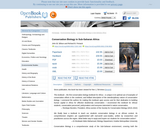
Conservation Biology in Sub-Saharan Africa comprehensively explores the challenges and potential solutions to key conservation issues in Sub-Saharan Africa.
Easy to read, this lucid and accessible textbook includes fifteen chapters that cover a full range of conservation topics, including threats to biodiversity, environmental laws, and protected areas management, as well as related topics such as sustainability, poverty, and human-wildlife conflict. This rich resource also includes a background discussion of what conservation biology is, a wide range of theoretical approaches to the subject, and concrete examples of conservation practice in specific African contexts. Strategies are outlined to protect biodiversity whilst promoting economic development in the region.
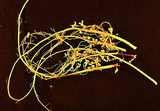
By the end of this section, you will be able to:Explain the need for nitrogen fixation and how it is accomplishedIdentify foods in which prokaryotes are used in the processingDescribe the use of prokaryotes in bioremediationDescribe the beneficial effects of bacteria that colonize our skin and digestive tracts
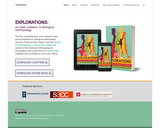
Anthropology is the study of humanity, in all its biological and cultural aspects, past and present. It is a four-field discipline comprised of biological anthropology, cultural anthropology, archaeology, and linguistic anthropology. The focus of this book is biological anthropology, which explores who we are from biological, evolutionary, and adaptive perspectives.
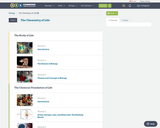


By the end of this section, you will be able to:List the unifying characteristics of eukaryotesDescribe what scientists know about the origins of eukaryotes based on the last common ancestorExplain endosymbiotic theory
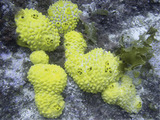
By the end of this section, you will be able to:Describe the organizational features of the simplest multicellular organismsExplain the various body forms and bodily functions of sponges

By the end of this section, you will be able to:Describe the role of fungi in the ecosystemDescribe mutualistic relationships of fungi with plant roots and photosynthetic organismsDescribe the beneficial relationship between some fungi and insects
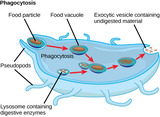
By the end of this section, you will be able to:Describe the cell structure characteristics of protistsDescribe the metabolic diversity of protistsDescribe the life cycle diversity of protists
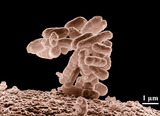
By the end of this section, you will be able to:Identify the shared characteristics of the natural sciencesSummarize the steps of the scientific methodCompare inductive reasoning with deductive reasoningDescribe the goals of basic science and applied science
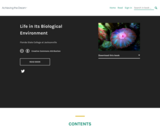
Word Count: 13496
(Note: This resource's metadata has been created automatically by reformatting and/or combining the information that the author initially provided as part of a bulk import process.)

NSCC EDITION
Word Count: 334544
ISBN: 978-1-990641-55-8
(Note: This resource's metadata has been created automatically by reformatting and/or combining the information that the author initially provided as part of a bulk import process.)

By the end of this section, you will be able to:Identify the shared characteristics of the natural sciencesSummarize the steps of the scientific methodCompare inductive reasoning with deductive reasoningDescribe the goals of basic science and applied science
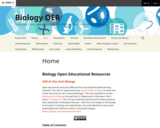
The laboratory activities on this page can be used with the TBR BIOL 1010 OER course modules. Refer to the TBR BIOL 1010 OER course syllabus to match laboratory activities with course modules.

By the end of this section, you will be able to:Classify fungi into the five major phylaDescribe each phylum in terms of major representative species and patterns of reproduction

By the end of this section, you will be able to:Compare structural and organization characteristics of Porifera and CnidariaDescribe the progressive development of tissues and their relevance to animal complexity
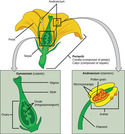
By the end of this section, you will be able to:Explain why angiosperms are the dominant form of plant life in most terrestrial ecosystemsDescribe the main parts of a flower and their purposeDetail the life cycle of an angiospermDiscuss the two main groups of flowering plants
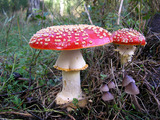
By the end of this section, you will be able to:List the characteristics of fungiDescribe the composition of the myceliumDescribe the mode of nutrition of fungiExplain sexual and asexual reproduction in fungi

By the end of this section, you will be able to:Describe the structural organization of nematodesUnderstand the importance of Caenorhabditis elegans in researchCompare the internal systems and appendage specializations of phylum ArthropodaDiscuss the environmental importance of arthropodsDiscuss the reasons for arthropod success and abundance
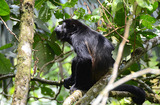
By the end of this section, you will be able to:Describe the derived features that distinguish primates from other animalsExplain why scientists are having difficulty determining the true lines of descent in hominids
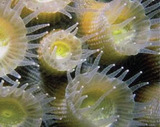
By the end of this section, you will be able to:Describe the role that protists play in the ecosystemDescribe important pathogenic species of protists
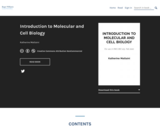
For use in RWU BIO103
Word Count: 96546
(Note: This resource's metadata has been created automatically by reformatting and/or combining the information that the author initially provided as part of a bulk import process.)

By the end of this section, you will be able to:Interpret the metazoan phylogenetic treeDescribe the types of data that scientists use to construct and revise animal phylogenyList some of the relationships within the modern phylogenetic tree that have been discovered as a result of modern molecular data

Word Count: 8522
(Note: This resource's metadata has been created automatically by reformatting and/or combining the information that the author initially provided as part of a bulk import process.)
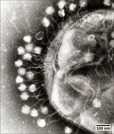
By the end of this section, you will be able to:List the steps of replication and explain what occurs at each stepDescribe the lytic and lysogenic cycles of virus replicationExplain the transmission and diseases of animal and plant virusesDiscuss the economic impact of animal and plant viruses
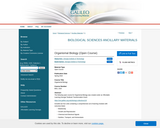
The following open course for Organismal Biology was created under an Affordable Learning Georgia Textbook Transformation Grant:
https://oer.galileo.usg.edu/biology-collections/14/
Included are four units containing a comprehensive set of learning modules with outcomes listed:
Biodiversity
Growth and Reproduction
Chemical and Electrical Signals
Nutrition, Transport, and Homeostasis